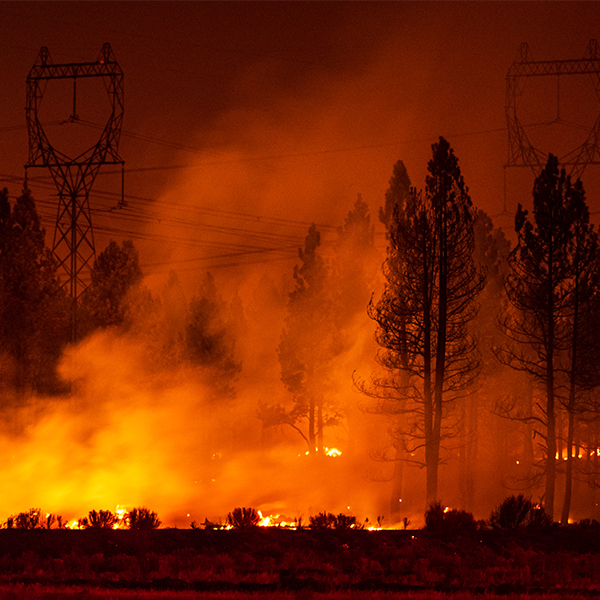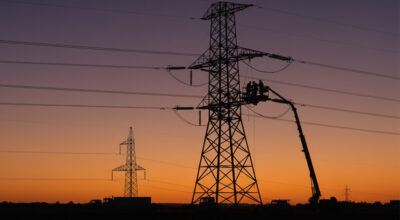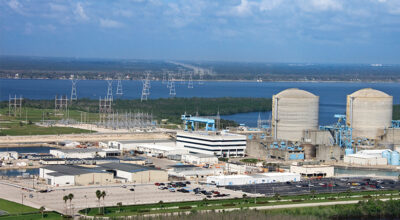The January 2025 Southern California devastating wildfires were a stark reminder of the catastrophic impact of wildfires, whether they are ignited by a fault in a power line or not. With the damage to people, critical infrastructure, and the environment, the power supplier’s liability can be colossal. Energy supplier companies that understand their exposure and take pre-emptive measures to minimize the risks that their grid will ignite such fires.
The rising cost of wildfires
Aside from the human cost, the economic ramifications are staggering. Estimates place the total economic loss from the 2023 Los Angeles wildfires at over $250 billion, making them one of the costliest natural disasters in U.S. history. The damage caused by wildfires is consistently increasing across the globe. Beyond immediate damage, the broader economic impact includes long-term costs such as infrastructure repair, healthcare expenses, and loss of business revenue. The U.S. Joint Economic Committee estimates that wildfires cause between $394 billion and $893 billion in damages annually, equivalent to 2–4% of the U.S. GDP.
Wildfires are directly associated with droughts, and those are becoming more frequent and widespread. Predictions for 2025 Q3 and Q4 show the spread of persisting drought, particularly susceptible to leading to wildfires.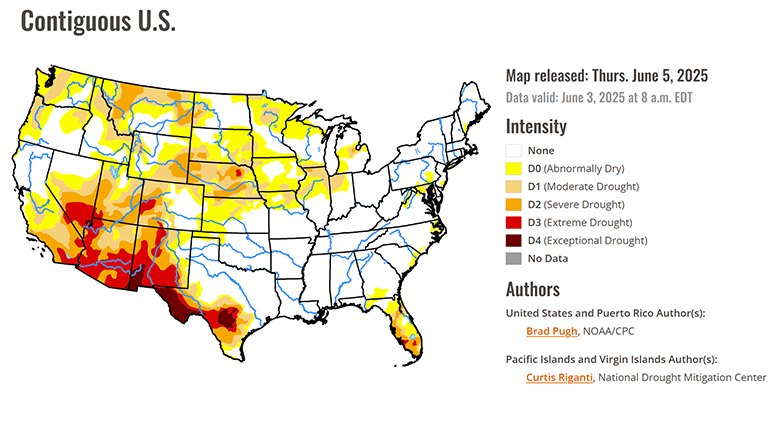
Source: U.S. Drought Monitor, June 2025
Pre-emption through early detection of wildfires is crucial to limiting their scope and costs. When wildfires occur in the vicinity of power towers, optic fiber sensors can detect and report anomalous changes in temperature. When a wildfire starts in a remote area, such reports can raise alarm even before classic fire detection measures are triggered. In some cases, issues with power lines are the source of wildfires. Detecting these issues at an early stage gives line workers early warning and grants them time to fix the problems before they escalate.
The California Example
California leads the country with the highest number of wildfires and the most acres burned. Most of California’s largest and most destructive wildfires occurred in recent decades.
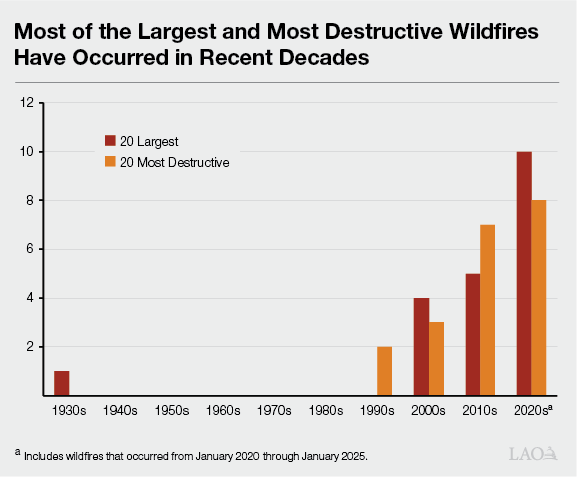 Source: Calfornia Legislative Analyst’s Office
Source: Calfornia Legislative Analyst’s Office
According to the California Legislative Analysis Office, powerlines caused at least 8 of the 20 of those major fires. Aside from the human and material damage, the financial cost of these fires is immense, reaching hundreds of millions of dollars. When an energy company is held responsible for causing a fire, it faces multiple lawsuits from those affected by the incident.
The Lahaina Example
HECO, the Hawaiian Electric Company, is liable for $1.99 billion for the 2023 Lahaina Fire in Maui, Hawaii. That fire killed 102 people, destroyed more than 2,200 structures, and leveled much of Lahaina. In March 2025, HECO and its parent company HEI won the lawsuit launched against them by the 192 insurance companies that paid out claims to fire victims. Had they lost it, it would have meant bankruptcy. Given these costs, investing in pre-empting wildfires attributable to power lines might save billions.
How to Detect Power Line Anomalies Before They Become Fire Hazards
There are a few potential faults in power lines that might cause sparks initiating a wildfire, including:
- Short Circuit caused by galloping or sagging lines, damaged insulation, or other factors.
- Arcing resulting from damaged equipment, corrosion, and contamination on insulators.
- Flashover due to dirty or wet insulators, salt contamination, or conductive pollution.
- Conductor Contact due to contact with vegetation or a foreign object.
- Equipment Failure attributable to faulty infrastructure, inadequate maintenance, or other defects.
Symptoms of most of these can be detected before they escalate to a spark-generating level. Using a single strand of the existing OPGW cable, Prisma Photonics technology turns that cable into a highly sensitive sensor. When a minute fraction of the light travelling through the optical fiber changes, it corresponds to an event that is analyzed by Prisma Photonics as it happens. Prisma Photonics can detect transmission line faults at their onset, pinpoint their location to the closest power tower, and send line workers to fix the issue at an early stage.
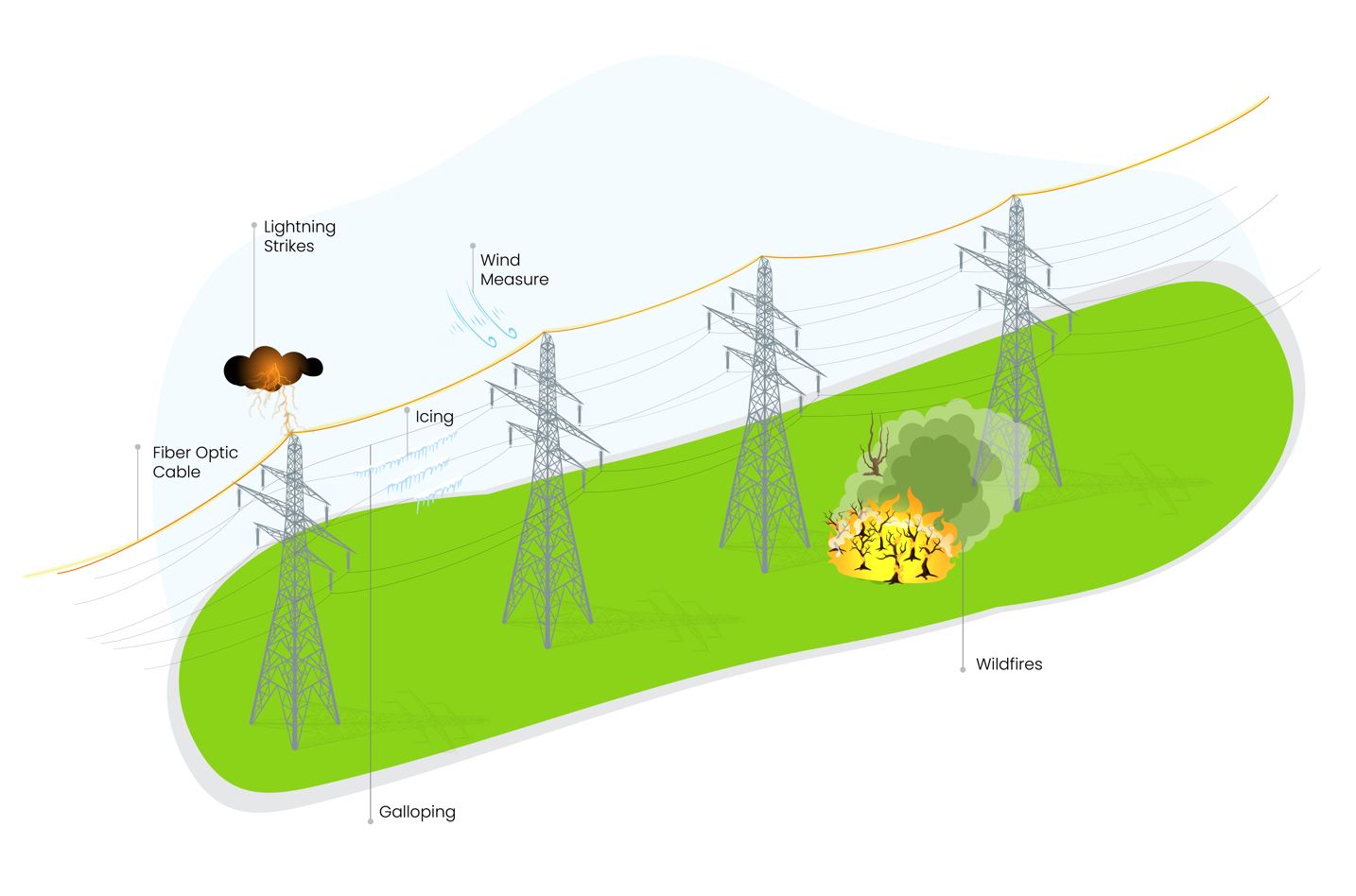
Source: PrismaClimate use cases
Early Wildfire Detection
Sometimes, pre-emptive intervention is not possible. For example, a falling tree blowing up a fuse, as was the case for the 2021 Dixie fire in California, cannot be predicted by optic fiber sensors as trees are not a part of the grid.
What the sensors can detect, on the other hand, is an anomalous rise in temperature and its wildfire’s distinct signature. In remote areas with limited wildfire detection, firefighters can be notified of a fire’s onset and extinguish it before it becomes severe. Additionally, wildfires near transmission lines that are not caused by the power line can be detected early, even before they are visible.
To illustrate how extensive and precise is the information provided by optic fiber sensors, we will have a close look at how Prisma Photonics recorded the trajectory of the July 2023 Gilboa Nature Reserve, Israel, brushfire when it passed close to power towers.
The picture below shows the power tower position in relation to the brushfire.
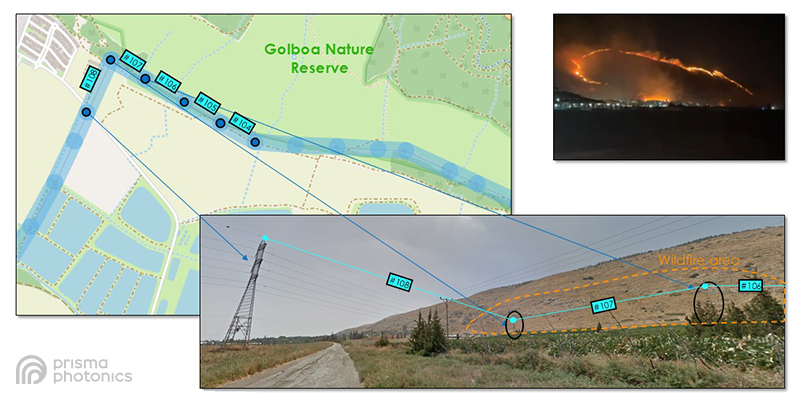
Source: Prisma Photonics
As the fire advanced, Prisma Photonics wildfire detectors showed the fire progression trajectory and speed.
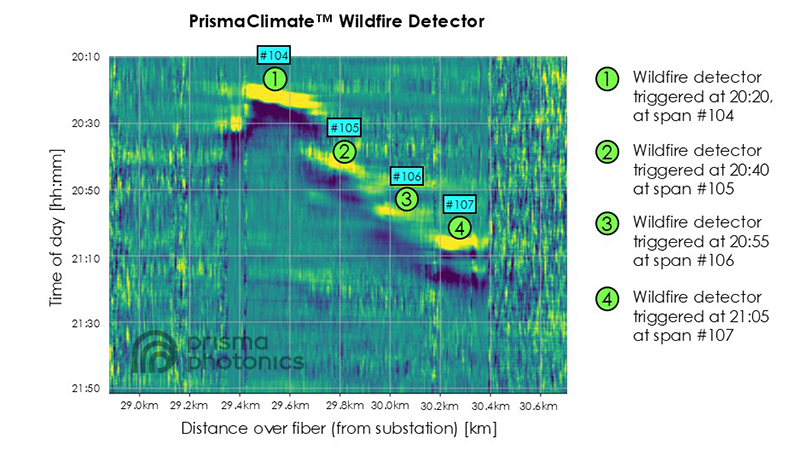
Source: Prisma Photonics
Post-Fire Line Integrity Damage
The soot generated by wildfires affects the lines’ integrity. Insulators and other tower-mounted equipment may suffer damage as fires burn below or nearby. They must be inspected to prevent outages and ensure that they will not be the source of the next fire.
Prisma Photonics can identify and locate the spans exposed to high heat, log cooling rates that reflect the degree and duration of exposure, and correlate heat exposure with known structure locations.
This granular view enables grid operators to make data-backed decisions about which grid segments require immediate inspection, whether due to heat exposure, i.e., tower warping, or to heat and soot-related damages.
The precision of the information provided facilitates maintenance scheduling prioritization and identifying what repairs are urgent and what can be deferred.
With wildfires’ frequency and intensity increasing across the globe, adopting optic fiber sensors can make the difference between a full-blown catastrophe and pre-empted or early detected fires.
Read more about PrismaClimate, Prisma Photonics’ solution for wildfires and extreme weather detection , and contact us for more details



